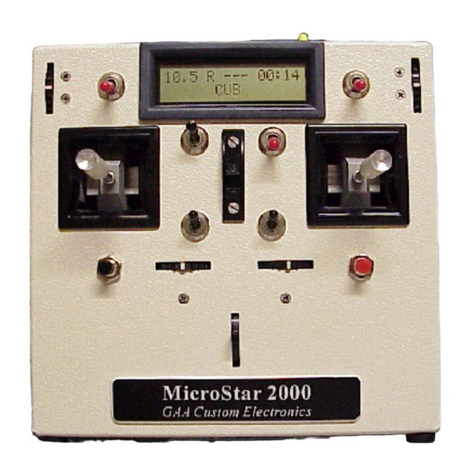
Page 2 MSI-3750CS-5 RF Weighmeter • User Guide
3750CS CELLSCALE RF DIGITAL WEIGHT INDICATOR
®
TABLE OF CONTENTS
Introduction ...................................................................................3
3750CS Display .............................................................................3
3750CS Front Panel .......................................................................3
Features ..........................................................................................4
SECTION 1 – UNIT INSTALLATION .............................................................5
Power .............................................................................................5
Totalize Switch option ...................................................................5
3750CS Rear Connectors ..............................................................5
3750CS Table Mount .....................................................................6
3750CS Wall Mount ......................................................................6
SECTION 2 – RF SCALE COMMUNICATIONS ...............................................7
Introduction – The CellScale system .............................................7
FCC Statement ...............................................................................7
Network Description .....................................................................7
Antennas ........................................................................................8
Standard Antenna ...........................................................................8
Long Range Omni 9dBi Antenna w/ Pipe Mount .........................9
Yagi Antenna ...............................................................................10
Corner Reflector Antennas ..........................................................10
Vehicle Mount Whip Antenna .....................................................10
Standard antenna bulkhead extensions ........................................11
Other Antennas ............................................................................11
2.4 GHz Interference ...................................................................11
FCC’s MPE Requirements ..........................................................11
RF Network Setup .......................................................................12
Configuring for multiple networks ..............................................14
Interpreting the RF Bar Graph .....................................................15
Troubleshooting RF Connection Problems .................................15
SECTION 3 – SCALE OPERATION .............................................................17
POWER .......................................................................................17
Multiple scale channels ...............................................................17
To Access Multiple Channels ......................................................18
ZERO ...........................................................................................18
Setup Zero ...................................................................................19
TARE ...........................................................................................19
SETUP TARE ..............................................................................21
NET/GROSS ...............................................................................23
UNITS .........................................................................................24
Setup Units ..................................................................................24
PEAK HOLD (Function Key Option) .........................................24
PRINT ..........................................................................................25
TEST ............................................................................................25
Activate & Deactivate Channels .................................................25
SECTION 4 – FUNCTION KEYS ................................................................26
Setup Function Keys ....................................................................26
SECTION 5 – ID CODES .........................................................................28
ID Code Organization ..................................................................28
Using ID Codes ...........................................................................30
Setup ID Codes ............................................................................33
ID Code String 1 & String 2 ........................................................34
SECTION 6 – TOTAL / STATISTICS ............................................................35
Total .............................................................................................35
Auto Total ....................................................................................35
Total Menu (Setup Total) .............................................................36
View Total ....................................................................................38
Clear All Totals ............................................................................39
Alternate Clear Total Methods ....................................................39
Statistics ......................................................................................39
SECTION 7 – 3750CS METER SETUP .....................................................41
Main Setup Menu ........................................................................41
Real Time Clock / Calendar ........................................................43
Setup Power Menu ......................................................................44
Bar Graph Menu ..........................................................................45
Lock .............................................................................................46
SECTION 8 – SET POINTS .......................................................................49
Introduction .................................................................................49
Set Point Setup Menu ..................................................................50
Example Set Point Programming ................................................52
Relay Output Option ....................................................................57
SECTION 9 – COMMUNICATION PORTS .....................................................61
Introduction .................................................................................61
Electrical Conformance ...............................................................61
Comm Port Cabling .....................................................................61
Data Configuration ......................................................................61
Output Control .............................................................................61
Comm Port Parameters ................................................................62
Format ..........................................................................................62
Comm Port 2 setup parameters ....................................................63
Printer / Output Formatting .........................................................63
Example Printer Formatting ........................................................64
Programming the End of Line String ..........................................65
Editing The Print String ...............................................................65
General Text/control Character Entry .........................................65
Serial Output “@” Commands ....................................................66
Computer Operation Via Host Codes ..........................................73
Host Code Commands .....................................................................
SECTION 10 – CELLSCALE CALIBRATION ................................................77
Calibrate General Information .....................................................77
Enable Calibration .......................................................................77
Reset Calibration .........................................................................79
Reset All ......................................................................................79
Calibrate Setup Menu ..................................................................80
Legal Standard .............................................................................80
To Calibrate ................................................................................81
To enable / disable azm (auto Zero Maintenance) .......................82
Motion band .................................................................................83
Center-of-Zero (COZ) Indicator ..................................................84
Setting Up The Motion Compensation Option ............................84
APPENDIX A – MENU MAPS ..................................................................86
APPENDIX B – ASCII CHART ................................................................92
APPENDIX C – SPECIFICATIONS & SUMMARY OF FEATURES ......................93
APPENDIX D – INTERNAL WIRING ..........................................................95
THE MSI LIMITED WARRANTY ..............................................................96






























